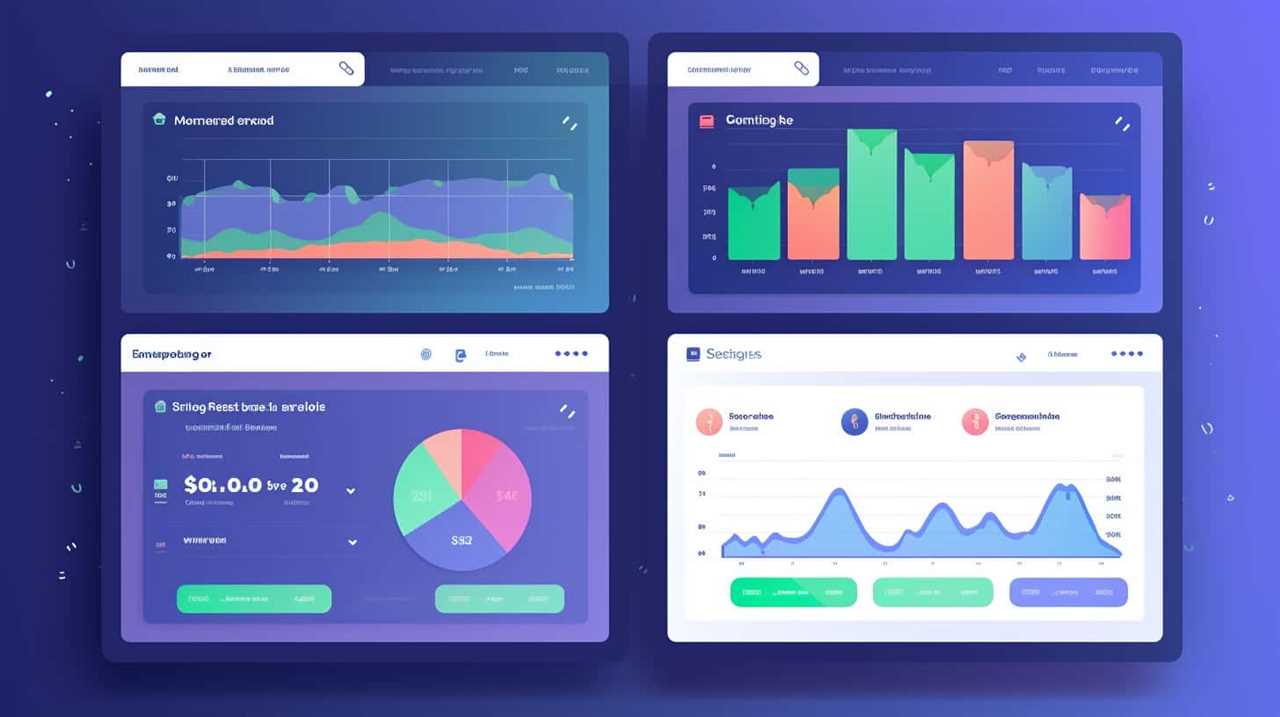Welcome to our article where we present the ultimate guide for fundamentally changing your digital presence.
In this guide, we reveal how content quality plays a pivotal role in shaping your digital power. Prepare to master the art of commanding attention, building trust, and establishing yourself as an influential figure in your niche.
Get ready to harness the incredible potential of strategic content creation, as we explore the key factors that influence content quality and how they can propel you to the top.
Let’s dive in!

Key Takeaways
- Content evaluation and optimization are essential for building a strong online presence.
- User engagement metrics reflect how well content resonates with the audience.
- Aligning content with user intent can increase engagement, establish authority, and drive meaningful results for online presence.
- Regularly producing high-quality content builds credibility.
The Importance of Content Quality
Our online power relies heavily on the quality of our content. Content evaluation and optimization are essential components in building a strong online presence.
Evaluating our content allows us to assess its effectiveness and determine whether it aligns with our goals and target audience. It involves analyzing various factors such as relevance, accuracy, and engagement. By identifying areas for improvement, we can optimize our content to enhance its impact.
Content optimization involves making strategic modifications to improve visibility, search engine rankings, and user experience. This includes optimizing keywords, structuring content for readability, and incorporating multimedia elements.
Defining Online Authority
To understand the concept of online authority, we must define it as the level of influence and credibility a person or brand holds in the digital space. Online influence is the ability to shape opinions, drive conversations, and inspire action among online audiences. It’s the power to make an impact and be recognized as a thought leader in a specific niche or industry.

Establishing credibility is about building trust and expertise through consistently delivering valuable and reliable content. It involves showcasing knowledge, providing evidence-based information, and engaging with the audience in an authentic and meaningful way.
Online authority isn’t just about having a large following or being popular; it’s about being respected and influential within a specific domain.
The Role of Content in Establishing Authority
As we delve into ‘The Role of Content in Establishing Authority’, it becomes evident that the quality of our content plays a crucial role in shaping our online power. Content optimization and a well-planned content strategy are essential for building authority in the digital space.
When our content is optimized, it becomes more visible to our target audience, increasing our chances of being seen as an authoritative source. By strategically creating and curating valuable and relevant content, we can establish ourselves as experts in our field and gain the trust and respect of our audience. This, in turn, enhances our online authority.

A strong content strategy allows us to consistently produce high-quality content that aligns with our brand and resonates with our audience, further solidifying our position as a trusted source of information.
The key to establishing authority lies in the creation and optimization of valuable and engaging content.
Key Factors Influencing Content Quality
When it comes to content quality, two key factors play a crucial role: relevance and originality.
Relevance ensures that the content is aligned with the interests and needs of your target audience, making it valuable and engaging to them.

Originality, on the other hand, sets your content apart from others by offering unique perspectives, insights, or solutions.
Additionally, user engagement metrics, such as time spent on page, bounce rate, and social shares, also contribute to content quality as they reflect how well your content resonates with your audience and keeps them engaged.
Relevance and Originality
While relevance and originality play a crucial role in determining the quality of content, it’s essential to understand their impact on shaping online authority.
When it comes to relevance, it’s about creating content that directly addresses the needs and interests of your target audience. By providing valuable and useful information, you can increase user satisfaction and establish yourself as a trusted source.

On the other hand, originality is all about standing out from the crowd. Offering unique perspectives, insights, or solutions can set you apart from competitors and attract attention.
By combining relevance and originality, you can create content that not only meets the needs of your audience but also distinguishes you as an authoritative voice in your industry.
Now, let’s explore how user engagement metrics further contribute to your online authority.
User Engagement Metrics
To delve deeper into the impact of user engagement metrics on content quality, let’s now explore the key factors that influence the effectiveness of your online presence. User behavior and conversion rate are two essential metrics that can significantly impact the quality of your content. User behavior metrics provide insights into how users interact with your content, such as time spent on page, bounce rate, and click-through rate. These metrics indicate the level of engagement and interest your content generates. On the other hand, the conversion rate measures the percentage of users who take a desired action, such as making a purchase or filling out a form. A high conversion rate indicates that your content successfully motivates users to take the desired action, indicating its effectiveness. By closely monitoring and analyzing these metrics, you can optimize your content to improve user engagement and conversion rates, ultimately enhancing your online presence.

| User Behavior Metrics | Conversion Rate Metrics |
|---|---|
| Bounce rate | Conversion rate |
| Time spent on page | Click-through rate |
| Click-through rate | |
Understanding User Intent for Targeted Content
User intent plays a crucial role in creating targeted content that resonates with our audience. By understanding what our users are looking for and what they hope to achieve, we can tailor our content to meet their needs and provide value.
This requires us to employ effective content targeting strategies, such as conducting keyword research, analyzing user behavior data, and staying abreast of industry trends. By aligning our content with user intent, we can increase engagement, establish authority, and drive meaningful results for our online presence.
User Intent and Relevance
We understand the importance of understanding user intent for creating targeted content. When it comes to user satisfaction, knowing what your audience wants and needs is crucial. By analyzing user behavior, search patterns, and demographics, you can gain valuable insights into their intent. This knowledge allows you to tailor your content to their specific needs, increasing the likelihood of user engagement and satisfaction.
To achieve this, keyword optimization plays a vital role. By researching and incorporating relevant keywords into your content, you can ensure that your material aligns with user intent. This not only helps you attract the right audience but also boosts your website’s visibility in search engine results.

Content Targeting Strategies
Our strategy for content targeting revolves around understanding user intent for creating targeted content. To achieve this, we employ content personalization and audience segmentation techniques.
By tailoring our content to meet the specific needs and interests of our audience, we can effectively engage them and provide value. Content personalization allows us to deliver relevant and personalized information, enhancing the overall user experience. We achieve this by analyzing user data, such as demographics, browsing behavior, and past interactions, to create targeted content that resonates with our audience.
Additionally, audience segmentation enables us to divide our audience into distinct groups based on shared characteristics or preferences. This allows us to create content that speaks directly to the needs and interests of each segment, increasing the likelihood of engagement and conversion.
Crafting Engaging and Valuable Content
As content creators, it’s crucial to understand the importance of crafting engaging and valuable content that captivates our audience. A well-planned content strategy is essential for creating content that resonates with our target audience. Here are three key points to consider when crafting engaging and valuable content:

- Audience segmentation: Understanding our audience and their needs is the first step in creating content that appeals to them. By segmenting our audience based on demographics, interests, and behavior, we can tailor our content to their specific preferences.
- Compelling storytelling: Captivating our audience requires the art of storytelling. We can use narratives, anecdotes, and personal experiences to connect with our readers on an emotional level and keep them hooked.
- Providing value: Valuable content is informative, educational, and solves a problem for our audience. By offering practical tips, actionable advice, or in-depth analysis, we establish ourselves as trusted authorities in our niche.
Optimizing Content for Search Engine Visibility
To enhance the reach and impact of our content, it’s vital to optimize it for search engine visibility.
One effective strategy for improving search rankings is using long tail keywords. These are specific, longer phrases that target a niche audience and have less competition. By incorporating long tail keywords into our content, we can increase our chances of appearing higher in search engine results and attracting more relevant traffic to our website.
Another important aspect of optimizing content for search engine visibility is optimizing meta tags. Meta tags are snippets of text that provide information about the content of a webpage. By optimizing meta tags with relevant keywords and compelling descriptions, we can improve our chances of appearing in search engine results and attracting clicks from users.
By implementing these strategies, we can enhance our content’s visibility and improve our chances of reaching our target audience.

Now, let’s move on to the next section and explore how building credibility through expertise and research can further strengthen our online authority.
Building Credibility Through Expertise and Research
When it comes to building credibility online, expertise and research play a crucial role.
The more knowledgeable and experienced we’re in our field, the more trust we can gain from our audience.
Expertise Breeds Credibility
Through our expertise and thorough research, we establish credibility in our online presence. Our expertise validation comes from years of experience and specialized knowledge in our industry. We’ve dedicated ourselves to becoming experts in our field, constantly staying up-to-date with the latest trends and advancements. This commitment to ongoing learning and growth allows us to provide valuable insights and solutions to our audience.

Industry recognition also plays a crucial role in building credibility. Being recognized as a leader in our industry by our peers and other experts adds an extra layer of validation to our expertise. It demonstrates that our knowledge and contributions are respected and trusted by those in the same field.
Research Strengthens Authority
Our extensive research further strengthens our authority, as it provides concrete evidence and data to support our expertise in the industry. We employ rigorous research methods and thorough data analysis to ensure the accuracy and reliability of our findings.
By conducting in-depth studies and surveys, we gather valuable insights that contribute to our knowledge base. This allows us to deliver well-informed and evidence-based content to our audience.
Our research not only adds credibility to our claims, but it also helps us stay ahead of industry trends and developments. We’re committed to staying current and providing our audience with the most up-to-date information.

Through our dedication to research, we solidify our position as a trusted source of expertise in our field.
Leveraging Social Proof for Authority Validation
To establish our authority, we leverage social proof for validation. By leveraging testimonials and social validation, we showcase the positive experiences and opinions of others to build trust and credibility with our audience. Here’s how we do it:
- Testimonials: We gather testimonials from satisfied customers who’ve benefited from our expertise. These testimonials highlight the value we provide and serve as social proof of our authority in the industry.
- Social Validation: We showcase the number of followers, likes, shares, and positive comments we receive on our content. This social validation reinforces our authority and shows that others find our content valuable and trustworthy.
- Influencer Endorsements: We collaborate with industry influencers who endorse our expertise and share our content with their audience. These endorsements further enhance our authority and expand our reach.
By leveraging these strategies, we validate our authority and establish ourselves as trusted experts in our field.
Now, let’s explore how we encourage user engagement and interaction to further strengthen our online power.

Encouraging User Engagement and Interaction
We actively foster user engagement and interaction on our platform to deepen connections and strengthen our online authority.
One of the key ways we enhance user experience is by encouraging user-generated content. By empowering our users to contribute their own content, we create a sense of community and ownership. This not only increases user engagement but also generates a wealth of valuable insights and perspectives.
User-generated content adds authenticity and credibility to our platform, making it more trustworthy and authoritative. Additionally, it allows users to have a voice and actively participate in shaping the content and direction of our platform.
We provide various avenues for user interaction, such as comments sections, forums, and polls, to encourage meaningful discussions and collaborations. By prioritizing user engagement and interaction, we create a dynamic and vibrant online community that strengthens our authority in the digital landscape.

Consistency and Frequency in Content Creation
By maintaining a consistent and frequent content creation schedule, we ensure that our platform remains a reliable source of information and maintains its authority in the digital landscape.
Consistency in content creation comes with its own set of challenges. It requires discipline, organization, and the ability to continuously generate fresh ideas. However, the benefits of frequency in content creation outweigh these challenges.
Here are three key reasons why consistency and frequency are crucial for building authority:
- Credibility: Regularly producing high-quality content builds trust with our audience. It shows that we’re committed to delivering valuable information consistently.
- Visibility: Consistently publishing content increases our online presence and makes it easier for our audience to find us. It improves our search engine rankings and drives more traffic to our platform.
- Engagement: Regularly engaging with our audience through fresh content encourages interaction and fosters a sense of community. It keeps our audience coming back for more and strengthens their connection to our platform.
Measuring and Monitoring Content Performance
How can we effectively measure and monitor the performance of our content? As content creators, it is crucial for us to have a clear understanding of how our content is performing in order to make informed decisions and optimize our strategies. One way to do this is by measuring content effectiveness and tracking content engagement. By analyzing key metrics and data, we can gain valuable insights into how our audience is interacting with our content and whether it is achieving our desired goals.

To help you get started, here is a table that outlines three important metrics to consider when measuring and monitoring content performance:
| Metric | Description | Importance |
|---|---|---|
| Pageviews | The number of times a page is viewed by users | Indicates the reach and popularity of content |
| Time on Page | The average amount of time users spend on a page | Reflects the level of engagement and interest in the content |
| Conversion Rate | The percentage of visitors who complete a desired action | Measures the effectiveness of the content in driving actions |
Frequently Asked Questions
How Can I Effectively Promote My Content to Increase Its Visibility and Reach?
To effectively promote our content and increase its visibility, we utilize various content promotion techniques. By strategizing our online presence and engaging with our audience, we can maximize our reach and establish authority in our industry.
What Are Some Common Mistakes to Avoid When Creating High-Quality Content?
Common content mistakes to avoid when creating high-quality content include lack of research, poor grammar and spelling, lack of originality, and not optimizing for SEO. Follow these tips to create engaging and strategic content that establishes your online power.
How Can I Ensure That My Content Remains Relevant and Up-To-Date Over Time?
To ensure our content remains relevant and up-to-date over time, we focus on content longevity by choosing evergreen topics. By staying informed, adapting to trends, and regularly updating our content, we maintain our online power.

Are There Any Specific Strategies or Techniques to Improve User Engagement With My Content?
To improve user engagement with our content, we can incorporate interactive elements and storytelling techniques. These strategies captivate our audience and make them more likely to stay engaged and share our content.
How Can I Leverage Influencer Marketing to Enhance My Online Authority and Credibility?
Influencer partnerships can greatly enhance our online authority and credibility. By leveraging the influence and credibility of industry experts, we can reach a wider audience and establish ourselves as trusted leaders in our field.
Conclusion
In conclusion, the authority formula reveals that content quality is the key to online power. By understanding user intent, leveraging social proof, and encouraging engagement, businesses can establish themselves as trusted authorities in their field.
Consistency and frequency in content creation are also crucial factors in maintaining authority. Monitoring and measuring content performance allows for continuous improvement.

By following these strategies, businesses can shape their online presence and increase their influence in the digital world.









